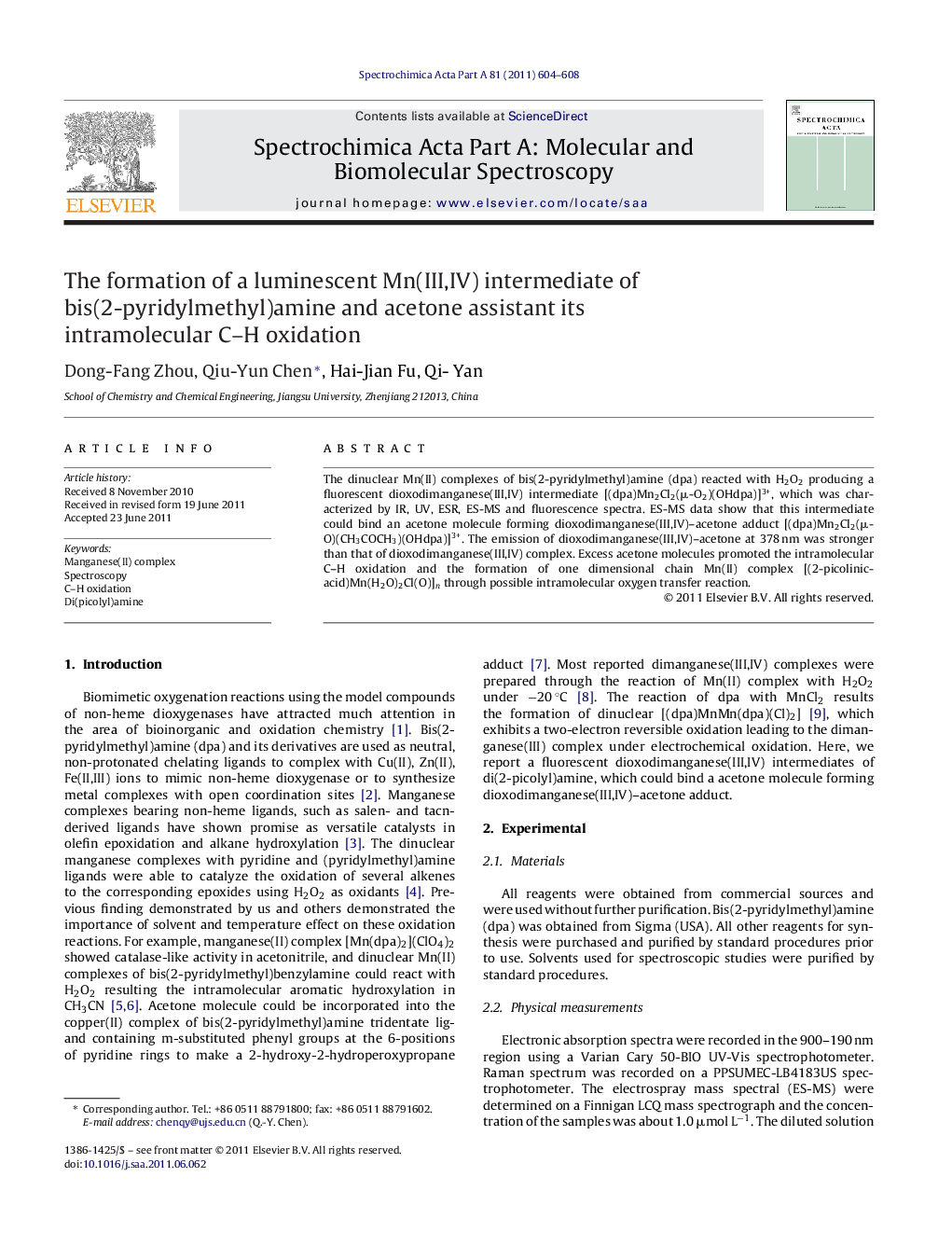| Article ID | Journal | Published Year | Pages | File Type |
|---|---|---|---|---|
| 1233598 | Spectrochimica Acta Part A: Molecular and Biomolecular Spectroscopy | 2011 | 5 Pages |
The dinuclear Mn(II) complexes of bis(2-pyridylmethyl)amine (dpa) reacted with H2O2 producing a fluorescent dioxodimanganese(III,IV) intermediate [(dpa)Mn2Cl2(μ-O2)(OHdpa)]3+, which was characterized by IR, UV, ESR, ES-MS and fluorescence spectra. ES-MS data show that this intermediate could bind an acetone molecule forming dioxodimanganese(III,IV)–acetone adduct [(dpa)Mn2Cl2(μ-O)(CH3COCH3)(OHdpa)]3+. The emission of dioxodimanganese(III,IV)–acetone at 378 nm was stronger than that of dioxodimanganese(III,IV) complex. Excess acetone molecules promoted the intramolecular C–H oxidation and the formation of one dimensional chain Mn(II) complex [(2-picolinic-acid)Mn(H2O)2Cl(O)]n through possible intramolecular oxygen transfer reaction.
Graphical abstractFigure optionsDownload full-size imageDownload as PowerPoint slideHighlights► A first fluorescent dioxodimanganese(III,IV) intermediate was characterized by spectrometric methods. ► This intermediate could bind an acetone molecule forming a new fluorescence dioxodimanganese(III,IV)–acetone adduct. ► Excess acetone molecules promote the intramolecular C–H oxidation of dioxodimanganese(III,IV) complexes through possible intramolecular oxygen transfer reaction.
